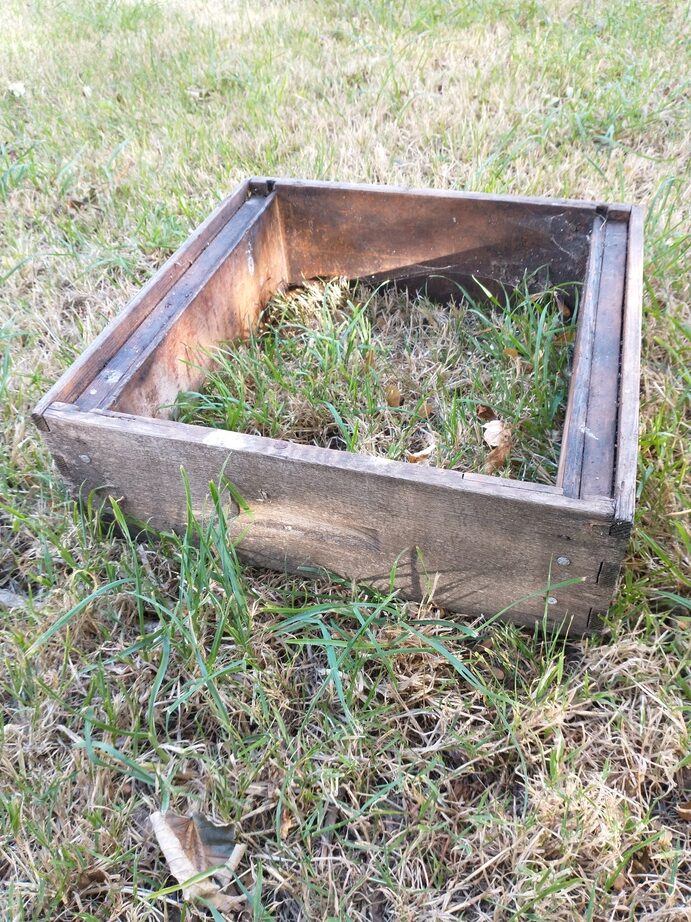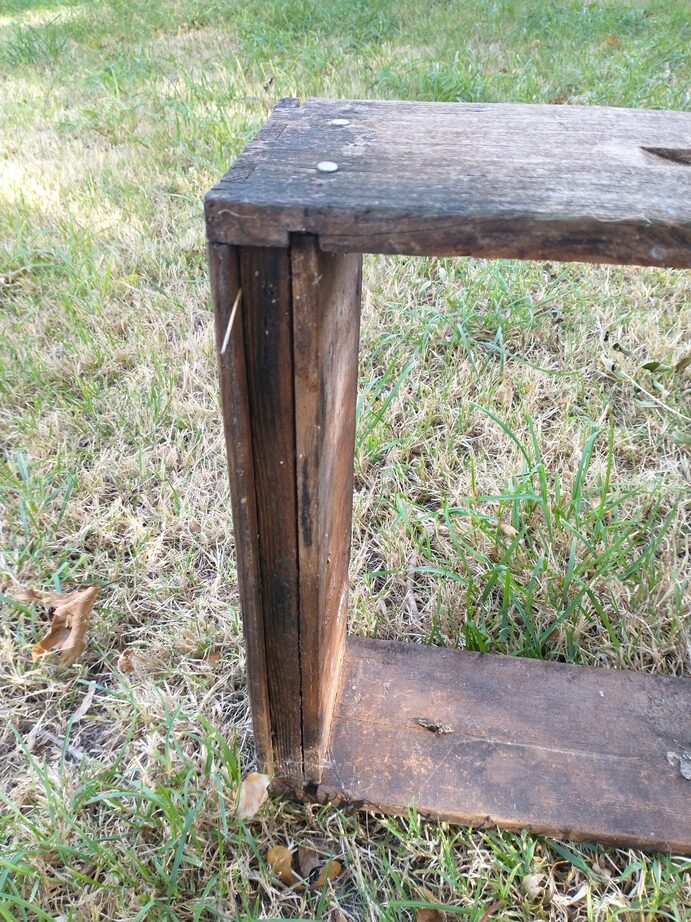- Joined
- Sep 4, 2011
- Messages
- 5,246
- Reaction score
- 4,712
- Location
- Wiveliscombe
- Hive Type
- National
- Number of Hives
- 24
Amongst a pile of kit I was donated many years ago I have some brood boxes and supers built in the style of a commercial hive, with finger-jointed sides and rebated hand-holds cut into the outside faces. But they're national footprint, and inside the sides that support the lugs have a spacing piece top and bottom to hold a second piece of timber forming the inside wall so the internal dimensions are correct for a national hive -- these sides are hollow, basically. The internal wall also extends above the top spacer and is tapered to form a frame rail.
A few of the corners of the supers are in need of repair where years of inserting a hive tool has worn them away so I was going to fix them up, but standing next to a modern super I noticed they're the wrong height. They look to be 5¾" rather than 5⅞" tall (or about 146mm instead of 150mm in new money).
Is this some design I'm unaware of, or does it look like a bit of a cock-up on the part of whoever made them?
I could of course repair them by cleaning up the worn edges and adding a new strip of timber across the bottom to bring them to the expected height, but it would mean there's more than one bee space above the frame lugs of the box below and I'm not sure how the bees might react to that. Correcting it probably takes me into the realms of deciding that's it's just less pain to buy a new one. I could always take them apart and recycle the cedar into other stuff I need.
James
A few of the corners of the supers are in need of repair where years of inserting a hive tool has worn them away so I was going to fix them up, but standing next to a modern super I noticed they're the wrong height. They look to be 5¾" rather than 5⅞" tall (or about 146mm instead of 150mm in new money).
Is this some design I'm unaware of, or does it look like a bit of a cock-up on the part of whoever made them?
I could of course repair them by cleaning up the worn edges and adding a new strip of timber across the bottom to bring them to the expected height, but it would mean there's more than one bee space above the frame lugs of the box below and I'm not sure how the bees might react to that. Correcting it probably takes me into the realms of deciding that's it's just less pain to buy a new one. I could always take them apart and recycle the cedar into other stuff I need.
James






